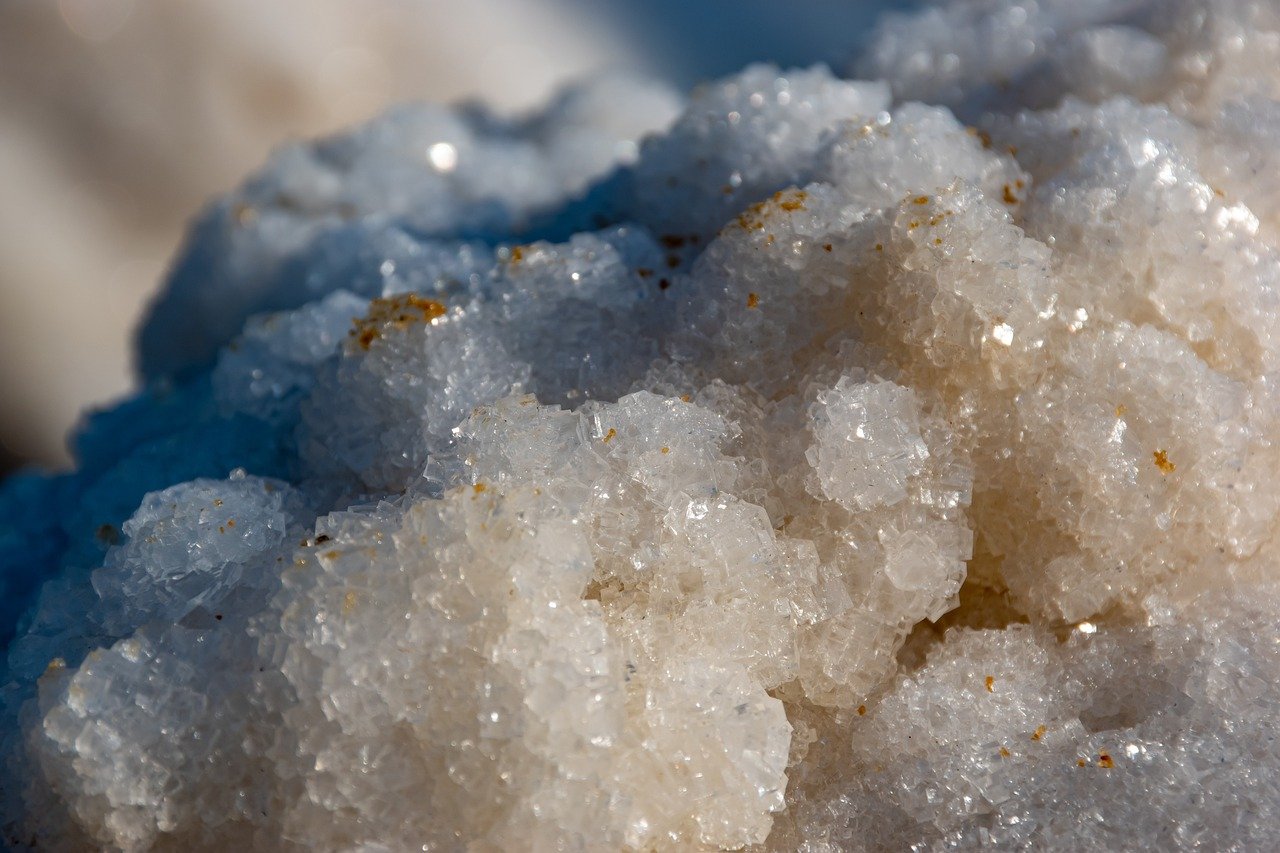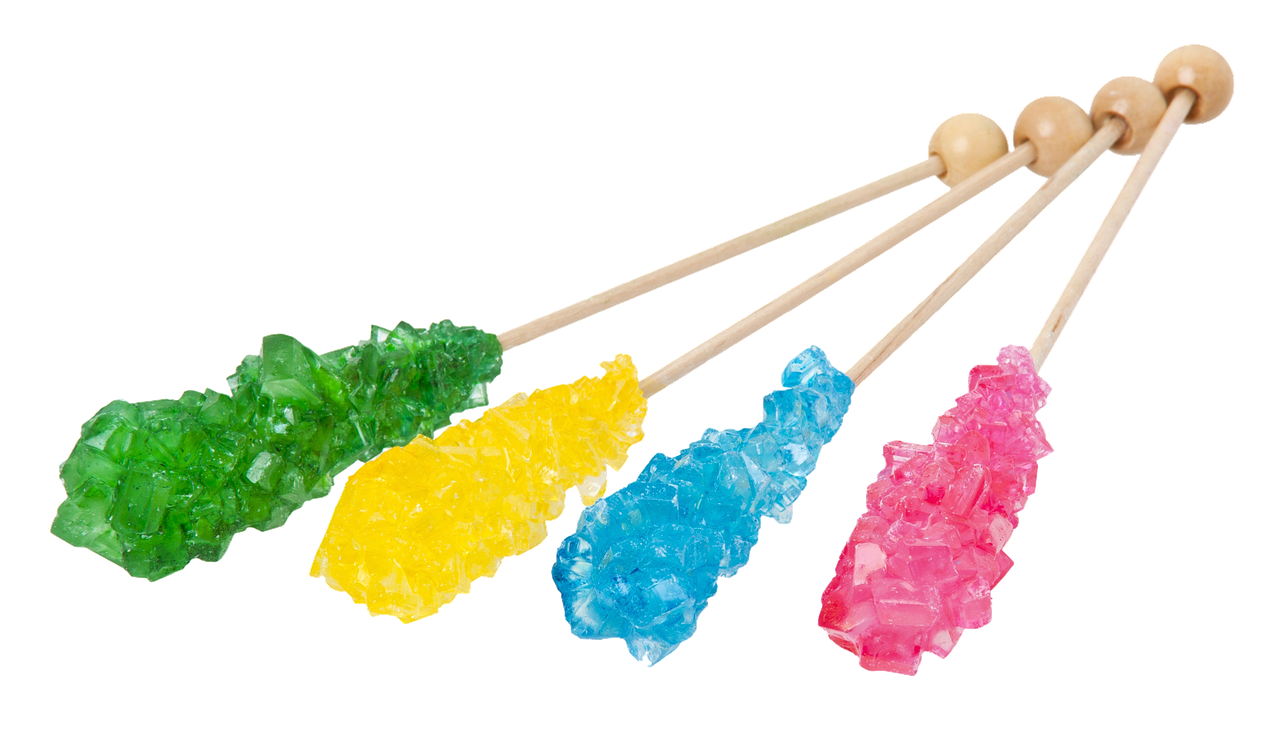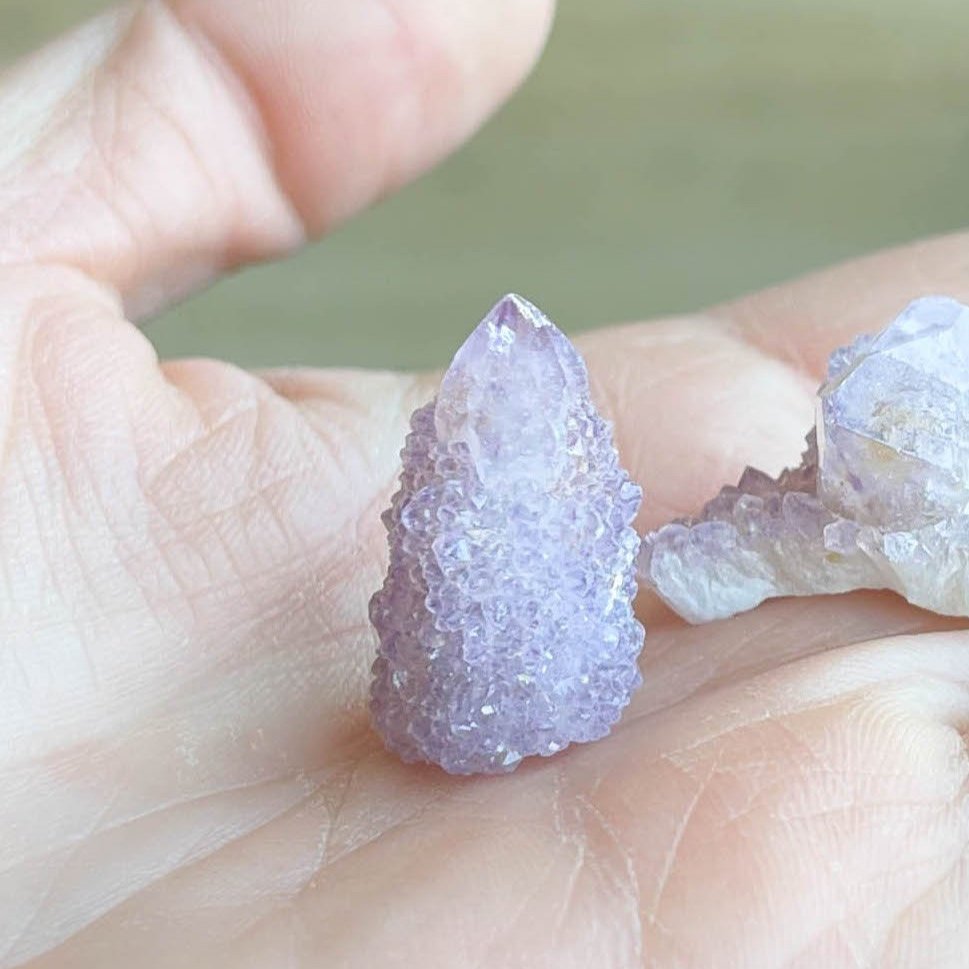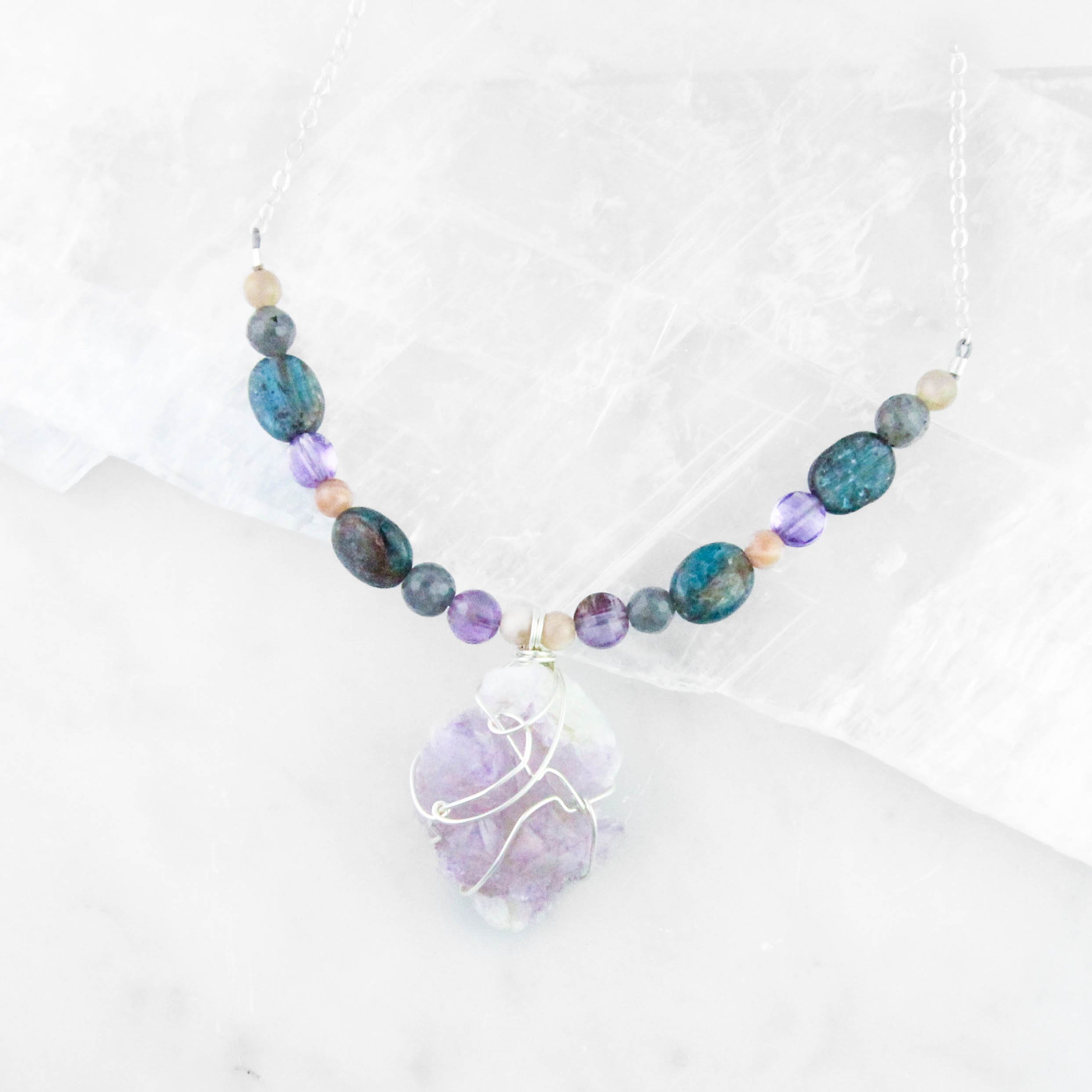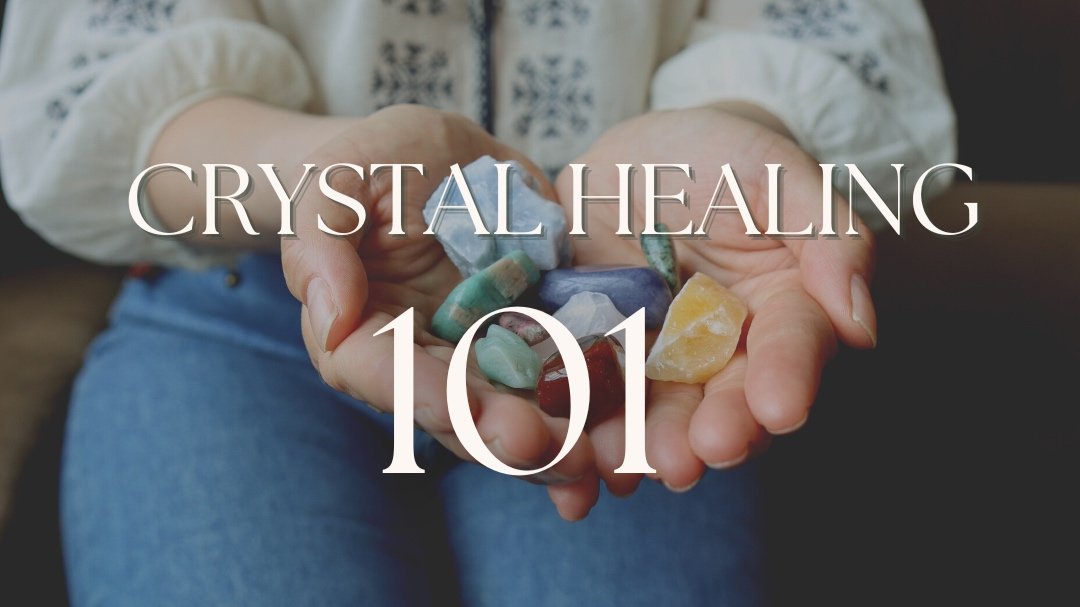Crystals 101: Exploring the Distinction between Crystals, Minerals, and Gemstones
Whether you're an experienced crystal enthusiast or just starting to dip your toes into the world of energy healing, the realm of crystals can initially be quite puzzling. Years ago when I began my crystal healing journey, I was captivated by the power of crystals, but the science behind their effectiveness remained elusive. As I scoured the internet, delved into books, and sought answers, I realized there was a need for a simplified explanation. Thus, the idea for this Crystals 101 series was born—to unravel the mysteries surrounding crystals, understand their full potential, and explore their healing benefits.
In this first installment, we're unraveling the differences between crystals, minerals, and gemstones. So, let's dive in!
What Constitutes a Crystal?
When we discuss crystals, minerals, and gemstones, it's essential to understand their underlying definitions. A crystal, in its most fundamental form, is any solid material with atoms, ions, or molecules arranged in an organized, repeating pattern that extends into three dimensions. This orderly structure lends crystals incredible strength, making them some of the most robust and resilient structures in existence.
However, not all substances we associate with healing and jewelry are technically classified as crystals. The common term "crystal" encompasses a broader range of materials than we often realize.
The Nuances: Crystals and Minerals and Organic Compounds, oh my!
In common usage, "crystal" often overlaps with the term "mineral." But technically there's a distinction.
A mineral is an inorganic, naturally occurring substance that possesses a crystalline structure. When we talk about crystals used for their energetic properties or healing, we're often referring to minerals. These include popular stones like Clear Quartz, which is a mineral with recognized energetic benefits. As a mineral name, Quartz refers to a specific chemical compound (silicon dioxide, SiO2), having a specific hexagonal crystalline form.
There are also many minerals that we don’t associate directly with aesthetic appeal or healing benefits, for example table salt, or Halite. Quartz and Halite are both clear, sparkly minerals, but one is associated with beauty and healing and the other is not. Beyond this distinction between minerals and what we commonly considered “healing crystals” there is another overlapping category.
There exist many other crystalline structures that are NOT minerals, because they are not inorganic. One good example of this is sucrose, commonly known as table sugar. Because it comes from a plant, it is an organic compound.
Let’s compare Table Salt and Table Sugar:
Halite (table salt) is an inorganic compound that has a definite chemical composition that can be expressed by the formula NaCl, and does have a definite crystalline structure. Thus halite is a mineral.
Sucrose (table sugar) is an organic compound derived from plants that has a definite chemical composition that can be expressed by the formula C12H22O11, and does have a definite crystalline structure. Because it comes from an organic source it is NOT a mineral. But because it has a repeating pattern that extends into three dimensions - a crystalline structure - it IS a crystal.
So if it's a mineral, then it's a definitely a crystal, but not all crystals are minerals. The most important takeaway is that when we say we want to go shopping for healing crystals, we’re really talking about a specific subset of the mineral world.
Got it? Whew! Now let’s unravel the mystery of crystals versus gemstones.
Gems and Their Hierarchy
The realm of gemstones adds another layer to the crystal conversation. All crystals can be considered gemstones, under specific circumstances, but not all gemstones are crystals. The narrow definition of “gemstone” is a rare mineral prized for its beauty and frequently utilized in jewelry making.
The Gemstone Spectrum
Within the realm of gemstones, we find two categories: precious and semi-precious. Think of iconic gems like diamonds, rubies, sapphires, and emeralds. These are universally acknowledged as precious gemstones. They are also all types of crystals.
Learn more about Precious Gemstones and their Crystal Cousins in this blog post.
Precious gemstones hold an esteemed position due to their rarity and enduring appeal. Beyond this slim category of precious gemstones, you find semi-precious gemstones like amethyst, aventurine, and citrine, all of which hold considerable value within the crystal and holistic healing community.
It’s important to note that these minerals, such as Amethyst, can be spoken of both crystals and gemstones, depending on context. When in their raw form they are less often considered for use in jewelry. However, they still have wonderful healing benefits and are often used as healing crystals. Once an amethyst is cut and polished it is considered a gemstone, with added value as decoration or adornment.
“If you use a crystal in jewelry is it automatically considered a gemstone? Just as beauty is in the eye of the beholder, so a crystal can be a gemstone if it is found lovely enough to wear or display. But I still like to call my creations healing crystal jewelry, since the focus is on their healing benefits rather than just their aesthetic value.”
Unconventional Gemstones
This Divine Purpose Necklace features Lapis Lazuli and Amber, used here both as beautiful gemstones and for their healing value. Since they are not crystals, they are generally referred to as “healing stones.”
Beyond the conventional boundaries of crystals lies a fascinating world of gemstones that challenge categorization. Some contain multiple minerals, such as Lapis Lazuli, which stretches that narrow definition of gemstone just slightly.
Lapis Lazuli is, in fact, a mixture of 3 different minerals: Lazurite (blue), calcite (white), and pyrite (gold). It has been prized for centuries for its intense hue, receiving its name from a combination of Latin and Persian, meaning “sky blue stone,” or more romantically “stone of heaven.”
Farther afield you find gems like amber. Because it is an organic material and it also does not have a crystalline structure, it is neither a mineral nor a crystal. Rather, amber is an organic material, consisting of ancient tree resin, transformed over time into a natural polymer.
For thousands of years Amber has been prized for its beauty and power. It appears in Greek mythology, Ancient Egyptian adornments, and Medieval rosaries. The Ancient Greek name for this gem was Elektron, referencing the brilliant sun that seemed to shine from within. Rubbing a piece of Amber can create friction and an electric charge. It was this strange quality that led to its same name being bequeathed to our term Electricity. A piece of Amber can also contain fossilized plans and insect material, a special distinction that increases the value of the gem. So although it does not fit the definition of a mineral, its history as a prized adornment allows it entry into the world of gemstones.
Summing it all up
Let’s recap: crystals are structured materials with a repeating, organized pattern. When discussing crystals for healing or energetic purposes, we're often referring to minerals, which are inorganic, naturally occurring substances with crystalline structures. Gemstones, on the other hand, encompass both precious and semi-precious varieties of minerals (and a few notable exceptions) each holding unique value, whether monetary or metaphysical.
Understanding the nuances of crystals, minerals, and gemstones lays a solid foundation for our journey into the world of crystal healing. In our upcoming blog, we'll explore the intriguing link between the crystalline structure of these gems and their profound healing properties. Stay tuned, crystal lovers, as we unravel the captivating science behind their magic!
“Do you need to understand all of this before you pick up an Amethyst and meditate with it? Not really. But it will prove incredibly helpful when you decide to dive deeper and understand how the compounds that make up each crystal affect their color, vibration, and healing benefits!”


